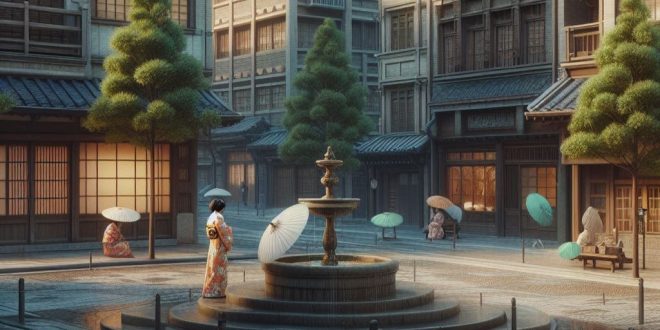Ancient, relaxing, but also bohemian or underground neighborhoods
The Japanese neighborhoods that retain the atmosphere of times gone by are numerous and fascinating. One of the most famous neighborhoods is Asakusa, the traditional cultural center of Tokyo https://www.tokyoweekender.com/japan-life/7-places-where-you-can-explore-old-tokyo/, where the temple is located Buddhist Sensoji, dating back to the 7th century. Another interesting neighborhood is Yanaka, together with the nearby neighborhoods of Nezu and Sendagi, which represent the image of Tokyo of the past. These neighborhoods are characterized by craft shops, wooden houses and narrow, winding streets. Other neighborhoods that may interest you are Koenji, a casual and alternative neighborhood, Shimokitazawa, an alternative neighborhood with vintage clothing shops and trendy cafes, and Nakameguro, a trendy neighborhood with designer shops and trendy restaurants.
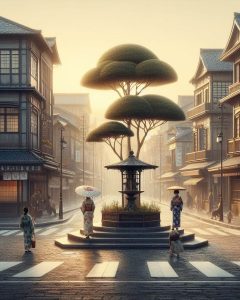 We begin our journey in Asakusa https://www.gotokyo.org/en/destinations/eastern-tokyo/asakusa/index.html starting from the Sensoji Temple, the oldest and most important Buddhist temple in Tokyo. The temple was founded in 645 AD. and is dedicated to the goddess Kannon, the goddess of compassion. After visiting the temple, we can take a walk along Nakamise-dori, a pedestrian street full of shops selling souvenirs, food and traditional Japanese items. In this street we can find everything, from samurai statuettes to kimonos to typical Japanese sweets. We can also stop for a coffee or a meal in one of the many restaurants overlooking the street. Continuing our route, we can reach the Azumabashi Bridge, a red bridge that crosses the Sumida River. From here, we can admire the view of the Tokyo Skytree, the tallest tower in the world. If we are interested in Japanese history and culture, we can visit the Edo-Tokyo Museum, which tells the story of Tokyo from its foundation to the present day. Finally, we can end our day with a visit to Sumida Park, a public park located along the Sumida River. In this park we can relax, take a walk or have a picnic. This is just a short itinerary, but there are many more things to see and do in this charming neighborhood. For your trip to Asakusa, wear comfortable shoes and be prepared to spend money, because prices are a little higher than elsewhere in Tokyo.
We begin our journey in Asakusa https://www.gotokyo.org/en/destinations/eastern-tokyo/asakusa/index.html starting from the Sensoji Temple, the oldest and most important Buddhist temple in Tokyo. The temple was founded in 645 AD. and is dedicated to the goddess Kannon, the goddess of compassion. After visiting the temple, we can take a walk along Nakamise-dori, a pedestrian street full of shops selling souvenirs, food and traditional Japanese items. In this street we can find everything, from samurai statuettes to kimonos to typical Japanese sweets. We can also stop for a coffee or a meal in one of the many restaurants overlooking the street. Continuing our route, we can reach the Azumabashi Bridge, a red bridge that crosses the Sumida River. From here, we can admire the view of the Tokyo Skytree, the tallest tower in the world. If we are interested in Japanese history and culture, we can visit the Edo-Tokyo Museum, which tells the story of Tokyo from its foundation to the present day. Finally, we can end our day with a visit to Sumida Park, a public park located along the Sumida River. In this park we can relax, take a walk or have a picnic. This is just a short itinerary, but there are many more things to see and do in this charming neighborhood. For your trip to Asakusa, wear comfortable shoes and be prepared to spend money, because prices are a little higher than elsewhere in Tokyo.
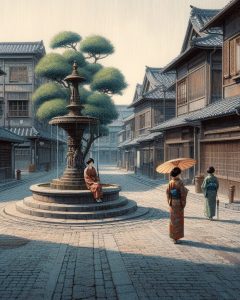 In this second district of the Japanese capital, we start from the Yanaka cemetery https://travel.gaijinpot.com/yanaka/, one of the largest cemeteries in Tokyo. The cemetery was founded in 1690 and is a peaceful and relaxing place to walk. Here we can find tombs of samurai, artists and other important figures in Japanese history. After visiting the cemetery, we can take a walk along Yanaka Ginza, a pedestrian street full of shops selling souvenirs, food and traditional Japanese objects. In this street we can find everything, from samurai statuettes to kimonos to typical Japanese sweets. We can also stop for a coffee or a meal in one of the many restaurants overlooking the street. Continuing our journey, we can reach the Nezu-jinja, a Shinto shrine founded in 725 AD. The shrine is known for its red torii gates and its garden, which is one of the most beautiful in Tokyo. If you are interested in Japanese history and culture, you can visit the Yayoi Museum, which displays a collection of art and artifacts from the Yayoi culture, which flourished in Japan from 300 BC. to 300 AC. Finally, you can end your day with a visit to the Shitamachi Museum, housed in a traditional wooden house from the Edo period, which tells the story and culture of old Tokyo.
In this second district of the Japanese capital, we start from the Yanaka cemetery https://travel.gaijinpot.com/yanaka/, one of the largest cemeteries in Tokyo. The cemetery was founded in 1690 and is a peaceful and relaxing place to walk. Here we can find tombs of samurai, artists and other important figures in Japanese history. After visiting the cemetery, we can take a walk along Yanaka Ginza, a pedestrian street full of shops selling souvenirs, food and traditional Japanese objects. In this street we can find everything, from samurai statuettes to kimonos to typical Japanese sweets. We can also stop for a coffee or a meal in one of the many restaurants overlooking the street. Continuing our journey, we can reach the Nezu-jinja, a Shinto shrine founded in 725 AD. The shrine is known for its red torii gates and its garden, which is one of the most beautiful in Tokyo. If you are interested in Japanese history and culture, you can visit the Yayoi Museum, which displays a collection of art and artifacts from the Yayoi culture, which flourished in Japan from 300 BC. to 300 AC. Finally, you can end your day with a visit to the Shitamachi Museum, housed in a traditional wooden house from the Edo period, which tells the story and culture of old Tokyo.
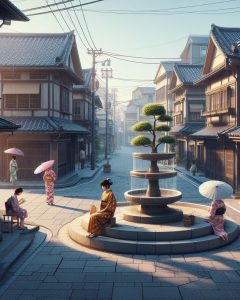 Nezu and Sendagi https://www.sangyo-rodo.metro.tokyo.lg.jp/tourism/accessible/en/course07.php, are two historic districts, located in Tokyo northern area. These neighborhoods are known for their relaxed atmosphere and rich history and culture. We will begin our trip to Nezu, visiting the Nezu-jinja, a Shinto shrine founded known for its azalea path, which transforms into a sea of pink and deep red flowers in spring. After visiting the shrine, you could take a stroll along Nezu-dori, a pedestrian street full of shops and restaurants. On this street you’ll find everything from art galleries to antique shops to restaurants serving traditional Japanese cuisine. Continuing your journey, you can reach the Nezu Museum, which houses a collection of Japanese, Chinese and Korean art. You can end your visit to Nezu with a visit to a public park, located nearby the sanctuary, where you can relax, take a walk or have a picnic. Now, you could go to Sendagi, a lively and modern university district, but which still retains a certain traditional charm. Your first stop in Sendagi is the University of Tokyo, one of the most prestigious universities in the world, located on a leafy campus where you can walk around and admire the architecture.
Nezu and Sendagi https://www.sangyo-rodo.metro.tokyo.lg.jp/tourism/accessible/en/course07.php, are two historic districts, located in Tokyo northern area. These neighborhoods are known for their relaxed atmosphere and rich history and culture. We will begin our trip to Nezu, visiting the Nezu-jinja, a Shinto shrine founded known for its azalea path, which transforms into a sea of pink and deep red flowers in spring. After visiting the shrine, you could take a stroll along Nezu-dori, a pedestrian street full of shops and restaurants. On this street you’ll find everything from art galleries to antique shops to restaurants serving traditional Japanese cuisine. Continuing your journey, you can reach the Nezu Museum, which houses a collection of Japanese, Chinese and Korean art. You can end your visit to Nezu with a visit to a public park, located nearby the sanctuary, where you can relax, take a walk or have a picnic. Now, you could go to Sendagi, a lively and modern university district, but which still retains a certain traditional charm. Your first stop in Sendagi is the University of Tokyo, one of the most prestigious universities in the world, located on a leafy campus where you can walk around and admire the architecture.
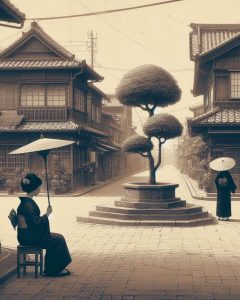 Koenji https://savvytokyo.com/koenji-guide-tokyos-retro-hub/, a neighborhood located in western Tokyo, is known for both its lively, multicultural atmosphere and its underground art and music scene. Koenji, a neighborhood full of shops selling vintage clothes, records, comics, toys and other second-hand items, is a shopping paradise. As for food, you’ll find a wide selection of restaurants here serving Japanese, international and fusion cuisine. As an important center of Japanese underground music, this neighborhood is home to numerous clubs and venues where punk, rock, metal and other musical genres perform. As a major center of the Japanese art scene, Koenji is home to numerous art galleries, artist studios and art festivals. Among the places not to be missed, remember the Koenji Nakadori Shotengai, the main shopping street. The Awa Odori Koenji dance festival, which takes place every year during the last weekend of August, is a celebration of Japanese culture that attracts visitors from all over the world.
Koenji https://savvytokyo.com/koenji-guide-tokyos-retro-hub/, a neighborhood located in western Tokyo, is known for both its lively, multicultural atmosphere and its underground art and music scene. Koenji, a neighborhood full of shops selling vintage clothes, records, comics, toys and other second-hand items, is a shopping paradise. As for food, you’ll find a wide selection of restaurants here serving Japanese, international and fusion cuisine. As an important center of Japanese underground music, this neighborhood is home to numerous clubs and venues where punk, rock, metal and other musical genres perform. As a major center of the Japanese art scene, Koenji is home to numerous art galleries, artist studios and art festivals. Among the places not to be missed, remember the Koenji Nakadori Shotengai, the main shopping street. The Awa Odori Koenji dance festival, which takes place every year during the last weekend of August, is a celebration of Japanese culture that attracts visitors from all over the world.
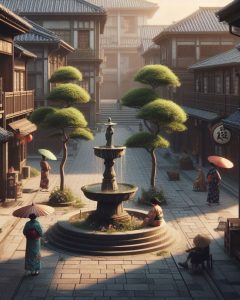 We want to introduce you to a neighborhood located west of the Japanese capital, Shimokitazawa https://www.gotokyo.org/en/destinations/western-tokyo/shimokitazawa/index.html, known for its bohemian atmosphere, its alternative art and music scene and its rich variety of shops and restaurants. This is a paradise for shopaholics, so you will have to navigate through shops selling vintage clothing, records, comics, toys and second-hand items. As for eating, this neighborhood offers a wide choice of restaurants, serving Japanese, international and fusion cuisine. Shimokitazawa, an important center of Japanese alternative music, hosts numerous clubs and venues where indie rock, jazz, blues and other musical genres perform. If you have time, you can visit museums and galleries of contemporary art, photography and design. Don’t miss visiting Shimokitazawa Station, surrounded by shops, restaurants and bars. On the Shimokitazawa Shotengai pedestrian street, you can find all kinds of shops and second-hand items. Take a break at Hoshino Coffee, a Shimokitazawa institution famous for its coffee and welcoming atmosphere. If you’re looking for some souvenirs, try visiting the Village Vanguard, a must for fans of Japanese culture.
We want to introduce you to a neighborhood located west of the Japanese capital, Shimokitazawa https://www.gotokyo.org/en/destinations/western-tokyo/shimokitazawa/index.html, known for its bohemian atmosphere, its alternative art and music scene and its rich variety of shops and restaurants. This is a paradise for shopaholics, so you will have to navigate through shops selling vintage clothing, records, comics, toys and second-hand items. As for eating, this neighborhood offers a wide choice of restaurants, serving Japanese, international and fusion cuisine. Shimokitazawa, an important center of Japanese alternative music, hosts numerous clubs and venues where indie rock, jazz, blues and other musical genres perform. If you have time, you can visit museums and galleries of contemporary art, photography and design. Don’t miss visiting Shimokitazawa Station, surrounded by shops, restaurants and bars. On the Shimokitazawa Shotengai pedestrian street, you can find all kinds of shops and second-hand items. Take a break at Hoshino Coffee, a Shimokitazawa institution famous for its coffee and welcoming atmosphere. If you’re looking for some souvenirs, try visiting the Village Vanguard, a must for fans of Japanese culture.
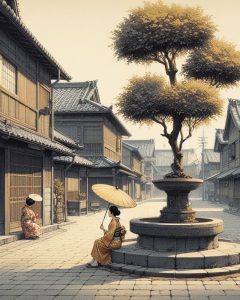 You could start with a walk along the Meguro River, a perfect place to admire the cityscape. Nakameguro Bridge, a neighborhood landmark, offers a great view of the river and surrounding neighborhoods. Nakameguro Omotesando, on the other hand, is the main shopping street of the city. Welcome to Nakameguro https://www.benrichards.co/blog/area-guide-nakameguro, a neighborhood located in the south of Tokyo, well known for its elegant and refined atmosphere, offers you a rich offer of shops. Here you are in a fashion lover’s paradise, as the neighborhood is home to high-end clothing stores, selling items from Japanese and international designers. This is also a major center of Japanese design that houses shops selling designer items, such as furniture, accessories and works of art. Are you exhausted? When it comes to food and drink, Nakameguro offers a wide selection of restaurants serving Japanese cuisine. Have you exhausted your spending budget? The neighborhood is at the center of coffee culture, so choose the bar you prefer.
You could start with a walk along the Meguro River, a perfect place to admire the cityscape. Nakameguro Bridge, a neighborhood landmark, offers a great view of the river and surrounding neighborhoods. Nakameguro Omotesando, on the other hand, is the main shopping street of the city. Welcome to Nakameguro https://www.benrichards.co/blog/area-guide-nakameguro, a neighborhood located in the south of Tokyo, well known for its elegant and refined atmosphere, offers you a rich offer of shops. Here you are in a fashion lover’s paradise, as the neighborhood is home to high-end clothing stores, selling items from Japanese and international designers. This is also a major center of Japanese design that houses shops selling designer items, such as furniture, accessories and works of art. Are you exhausted? When it comes to food and drink, Nakameguro offers a wide selection of restaurants serving Japanese cuisine. Have you exhausted your spending budget? The neighborhood is at the center of coffee culture, so choose the bar you prefer.
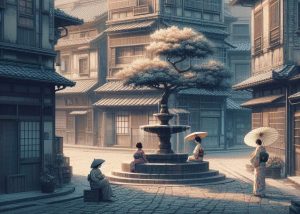 The only purpose of this site is to spread the knowledge of these creative people, allowing others to distinguish their works. If you want to know our travels, you can type http://meetingbenches.com/category/travel/. The intellectual properties of the images appearing on this blog correspond to their authors.
The only purpose of this site is to spread the knowledge of these creative people, allowing others to distinguish their works. If you want to know our travels, you can type http://meetingbenches.com/category/travel/. The intellectual properties of the images appearing on this blog correspond to their authors.
 Meeting Benches World art in all forms
Meeting Benches World art in all forms
